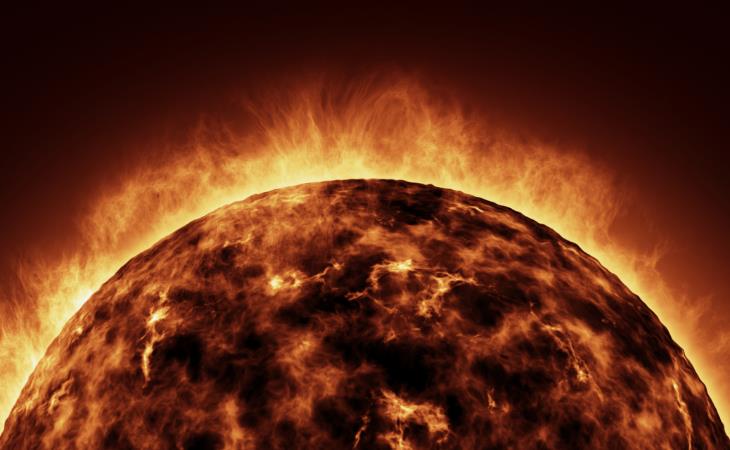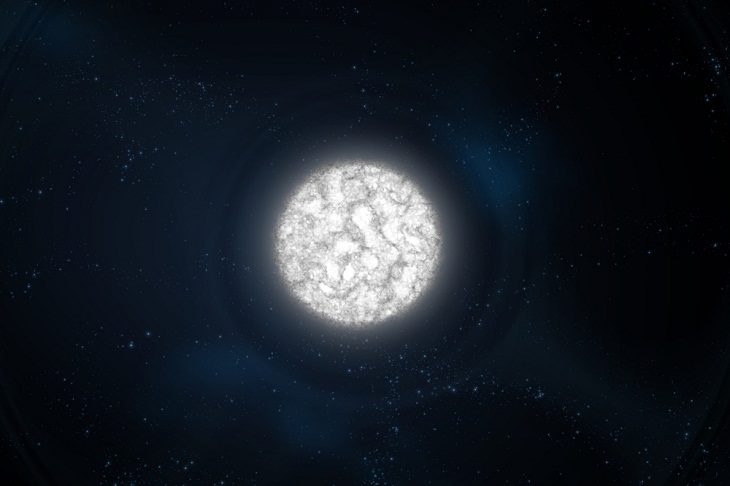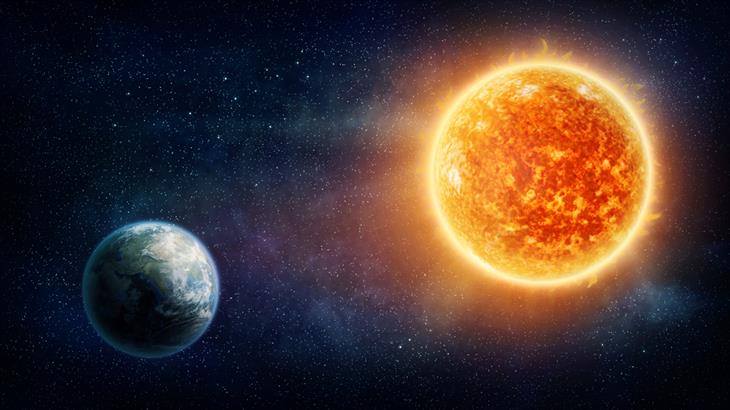So, when exactly will the Sun die? The scientists involved in the new study have concluded that the Sun will reach a maximum temperature at approximately 8 billion years of age. After that, it will begin to cool down and increase in size.
The Sun powers itself by fusing (or combining) extremely hot hydrogen atoms inside its core. As the hydrogen fuel runs out in its core, the fusion process will begin, and at around 10–11 billion years of age, the Sun will become a red giant star, lowering its surface temperature in the process. After this phase, the Sun will reach the end of its life and contract into a cold star - a dim white dwarf. This phenomenon happens when a star runs out of nuclear fuel and dies.
White dwarfs are hot (10,000K), dim stars that have burned up all the hydrogen they once used as their central nuclear fuel. Additionally, they have also lost their outer layers as a planetary nebula (a ring-shaped nebula formed by an expanding shell of gas around an aging star).
"If we don't understand our own Sun – and there are many things we don't know about it – how can we expect to understand all of the other stars that make up our wonderful galaxy,” says astronomer Orlagh Creevey, Observatoire de la Côte d’Azur, France.
The scientists involved in the study note that the speed of this process depends on the mass of the star and its chemical composition.
To deduce this, the study authors wanted to have a pure sample of stars with high precision measurements. They filtered the sample to only show stars with the same mass and chemical composition as the Sun. Next, they identified similar stars to the Sun with similar ages, which helped them bridge the observational gap in how much we know about the Sun vis-à-vis other stars in the universe.
Orlagh and his colleagues searched for stars with temperatures, surface gravities, compositions, masses, and radii that are all similar to the present-day Sun in the hope of identifying these ‘solar analogs’ in the Gaia data. They ended up finding 5,863 stars that matched their criteria.
What Will Happen When the Sun Burns Out?
Now that we know that the Sun will eventually die, the next question is - what will happen when it runs out of fuel? An international team of astronomers may have found the answer.
Last year, the team observed a Jupiter-sized planet orbiting a white dwarf star in the Milky Way. The distant planet had a mass 1.4 times that of Jupiter and was able to survive the death of its host star.
Previous calculations had estimated more than half of white dwarf stars are likely to have similar giant planets orbiting them. This discovery confirmed the phenomenon.
"We predict this planet has a distance [from the white dwarf] of between 2.5 and six times the distance of the Earth from the Sun, which is similar to that of Jupiter," said the study’s first author, Joshua Blackman of the University of Tasmania.
According to the scientists, this discovery will explain what will happen when the Sun burns out. They say that, after the Sun becomes a red giant, it's likely going to obliterate the inner planets. Per their estimates, Mercury and Venus will be destroyed. Earth, meanwhile, may survive the event but is likely to be vaporized a few million years after Mercury and Venus have been consumed.
Scientists also say that the red-giant phase is expected to last a few thousand to a billion years. During this phase, the Solar System’s ice worlds will melt and become ocean oases for millions of years.
As it gears up to its end, the Sun will also become much brighter and more unstable. It’s estimated that it might start pulsating 6,000 times more light and energy than it does now. This will kill off all life on Earth. In fact, according to some estimates, the Sun’s radiation will become so severe in a billion years that it will be next to impossible for any life on Earth to exist. But not all scientists agree with this interpretation.
Once the Sun completely runs out of fuel and becomes a white dwarf, it will give off only faint light, making it virtually impossible to observe it directly from ground-based telescopes.
Astronomers believe that the Sun’s death may also create habitable worlds in the coldest reaches of the Solar System, like on Pluto. In a paper published in 2003, astronomers theorized that when the Sun meets its eventual death, Pluto could develop its own atmosphere, allowing any humans left around to find refuge there.
Life has already existed on this planet for well over 3 billion years, and we have 5 billion years left before the Sun completely runs out of fuel. That’s a long time to devise a plan to vacate Earth before the big giant star goes out!
Share this post with friends and family



